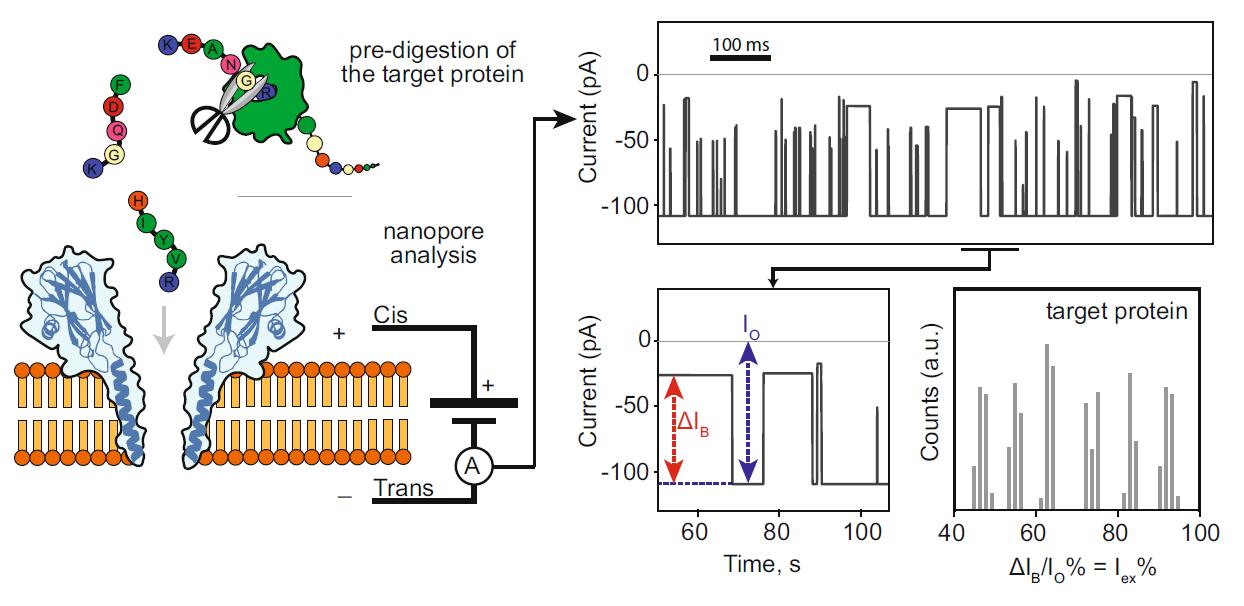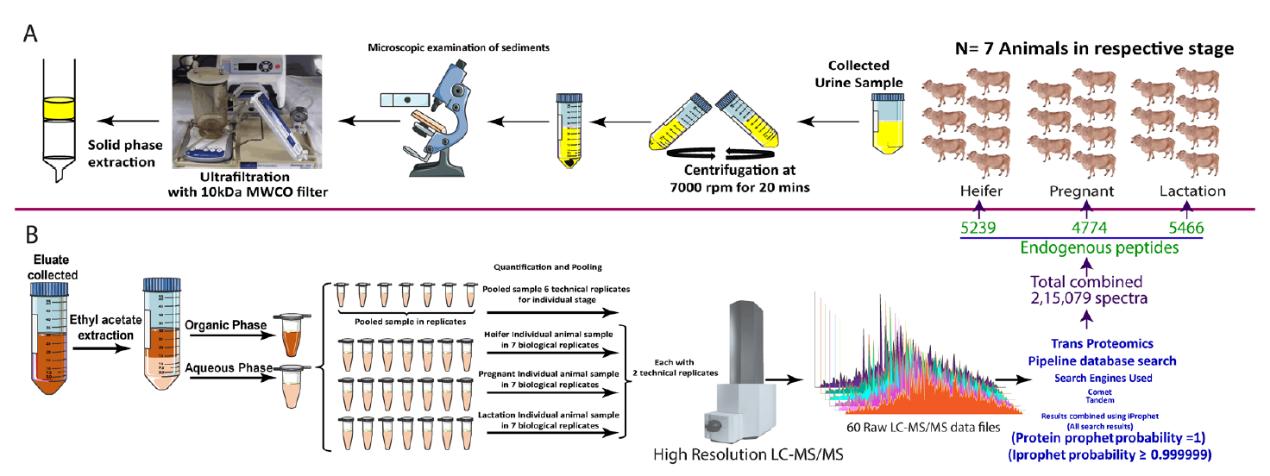Peptide profiling needs to comprehensively consider the protein itself, the purpose of the experiment and the expected results, and requires high-quality sample pretreatment technology, strong technical separation ability and information in order to obtain the best separation of protein hydrolyzed digestible and carry out reliable characterization and analysis of peptides. As a specialist in biomedical related technical services, Creative Peptides is able to provide peptide profiling services for customers in an efficient and cost-effective way of the best quality.
Peptide profiling is a detailed analytical method used to identify and characterize peptides within biological samples. This process involves extracting peptides—short chains of amino acids that result from protein breakdown—and analyzing them using techniques such as mass spectrometry (MS) and high-performance liquid chromatography (HPLC). These methods provide in-depth information about the peptides' composition, structure, and quantity, creating a detailed profile that helps researchers understand their roles and functions within biological systems.
By employing peptide profiling, researchers can uncover complex peptide patterns and interactions that may be crucial for understanding various biological processes. This technique enables the exploration of peptide dynamics in different contexts, such as disease states or cellular processes, and contributes to a deeper understanding of how peptides influence and regulate biological functions.
 Example of nanopore peptide profiling. ( Lucas F L R, et al., 2021)
Example of nanopore peptide profiling. ( Lucas F L R, et al., 2021)
Sample Preparation: The process of peptide profiling begins with meticulous sample preparation. Biological samples such as blood, tissue, or urine are processed to extract peptides while minimizing degradation and contamination. This often involves steps like protein denaturation, enzymatic digestion (e.g., trypsin digestion), and purification techniques to isolate peptides of interest. Proper sample preparation is critical to ensure the reliability and accuracy of the subsequent analytical results.
Analytical Techniques: Peptide profiling relies on sophisticated analytical techniques to identify and characterize peptides. Mass spectrometry (MS) is a central tool in this process, providing detailed information on the mass-to-charge ratio of peptide ions, which helps in identifying peptide sequences. Chromatographic methods, such as liquid chromatography (LC), are used to separate peptides based on their physicochemical properties before MS analysis. These techniques work in tandem to deliver a comprehensive view of the peptide composition in a sample.
Data Analysis: The large volume of data generated from peptide profiling requires advanced bioinformatics tools for analysis. Data analysis involves peptide identification, quantification, and comparison across different samples or conditions. Bioinformatics software and algorithms process the raw data to generate meaningful insights, such as peptide expression patterns or potential biomarkers. This analysis helps researchers interpret the results and draw conclusions about peptide functions and relationships.
Validation: After identifying potential peptides or peptide profiles, validation is crucial to confirm their biological relevance and accuracy. Validation may involve additional experiments or assays, such as targeted mass spectrometry or functional assays, to verify the presence and significance of the identified peptides. This step ensures that the findings from peptide profiling are robust and applicable to real-world biological or clinical contexts.
Comprehensive Analysis: Peptide profiling provides a broad and in-depth analysis of peptides present in a biological sample. This comprehensive approach allows researchers to capture a wide range of peptides, including those that might be overlooked by other methods. It enables the identification of novel peptides and the characterization of their roles within biological systems, offering a more complete picture of peptide biology.
Sensitive Detection: Advanced analytical techniques used in peptide profiling, such as mass spectrometry (MS) and high-performance liquid chromatography (HPLC), offer exceptional sensitivity. This high sensitivity allows for the detection of peptides at very low concentrations, which is critical for identifying biomarkers or studying peptides in challenging samples where they may be present in minute quantities.
Quantitative Assessment: Peptide profiling often provides quantitative data, which is essential for comparing peptide levels across different samples or experimental conditions. This quantitative aspect helps in understanding the dynamics of peptide expression, such as changes in peptide levels due to disease progression, treatment responses, or other biological factors.
Biomarker Discovery: One of the most significant advantages of peptide profiling is its potential for biomarker discovery. By identifying specific peptide profiles associated with diseases, researchers can discover new biomarkers that could improve diagnostic accuracy, prognostic assessments, and therapeutic monitoring. This application has profound implications for developing more precise and personalized medical interventions.
Biomedical Research: Peptide profiling is crucial in understanding the intricate roles peptides play in various biological processes. By analyzing peptides, researchers can uncover their involvement in cellular signaling pathways, immune responses, and metabolic processes. For instance, profiling peptides in cancer research can reveal how tumor cells alter peptide expression to evade immune detection or promote metastasis. This understanding can lead to new insights into disease mechanisms and facilitate the development of targeted therapies.
Clinical Diagnostics: In the realm of clinical diagnostics, peptide profiling is increasingly utilized to identify biomarkers associated with specific diseases or health conditions. For example, unique peptide signatures in blood or urine can serve as early indicators of diseases such as cancer, cardiovascular conditions, or neurodegenerative disorders. This application is particularly promising in personalized medicine, where peptide profiles can guide tailored treatment strategies based on an individual's unique biochemical makeup.
Pharmaceutical Development: The pharmaceutical industry relies on peptide profiling for drug discovery and development. Profiling helps evaluate the efficacy of peptide-based drugs by tracking their pharmacokinetics and metabolism. It also provides insights into peptide interactions with target proteins, facilitating the optimization of therapeutic peptides. This process includes assessing the stability, bioavailability, and potential off-target effects of peptide drugs, ultimately guiding their development and commercialization.
Proteomics: Within proteomics, peptide profiling offers a detailed view of protein expression, modification, and interaction. By analyzing peptide fragments derived from proteins, researchers can identify and quantify proteins within complex biological samples. This approach is invaluable for studying proteome changes in response to environmental stimuli, disease states, or drug treatments. It helps elucidate protein functions and interactions at a molecular level, contributing to a deeper understanding of cellular processes.
 Peptide profiling in cow urine reveals molecular signature of physiology‑driven pathways and in‑silico predicted bioactive properties (Kumar R, et al., 2021)
Peptide profiling in cow urine reveals molecular signature of physiology‑driven pathways and in‑silico predicted bioactive properties (Kumar R, et al., 2021)
Protease Digestion: We start by using six different types of proteases—Trypsin, Chymotrypsin, Asp-N, Glu-C, Lys-C, and Lys-N—to digest the target protein. Each protease has distinct cleavage specificity, allowing us to generate a diverse range of peptide fragments from the protein. This comprehensive digestion approach ensures that we cover various regions of the target protein, facilitating a thorough analysis of its peptide profile.
Sample Analysis: The digested peptides are then analyzed using advanced techniques such as nano liquid chromatography-tandem mass spectrometry (nano LC-MS/MS) or UV liquid chromatography-tandem mass spectrometry (UV LC-MS/MS). Nano LC-MS/MS offers high sensitivity and resolution for detailed peptide analysis, while UV LC-MS/MS provides accurate quantification and characterization of peptides based on their UV absorbance and mass. These techniques help in identifying the peptides and determining their sequence and abundance.
Peptide Mapping and Comparison: After analysis, we compare the obtained peptide coverage and peptide map with the theoretical sequence provided by you. This comparison involves aligning the experimental peptide sequences with the expected sequences to assess the extent of peptide coverage and identify any discrepancies. This step is crucial for verifying the accuracy of the peptide profiling and ensuring that the target protein's sequence is fully represented in the data.
Results and Interpretation: The final step involves compiling the results of the comparison to provide you with a detailed report. This report includes a comprehensive analysis of peptide coverage, sequence alignment, and any variations observed between the experimental and theoretical sequences. Our results aim to give you a clear understanding of the peptide profile of your target protein, facilitating further research or quality control processes.
Our peptide profiling is based on LC-MS/MS technology. Compared with the peptide profiling based on LC-MS or MALDI-TOF, our peptide mapping can give accurate conclusions about the primary structure and modification groups of the protein.
The tool developed by us can comprehensively search all kinds of possible modifiers reported in the literature, as well as the modifications specified by customers.
Double quantification was carried out in our peptide profiling combined with spectral detection and mass spectrometry detection. Accurate information can be given by small changes in the concentration of peptides and peptides that have not been completely separated in liquid chromatography.
References